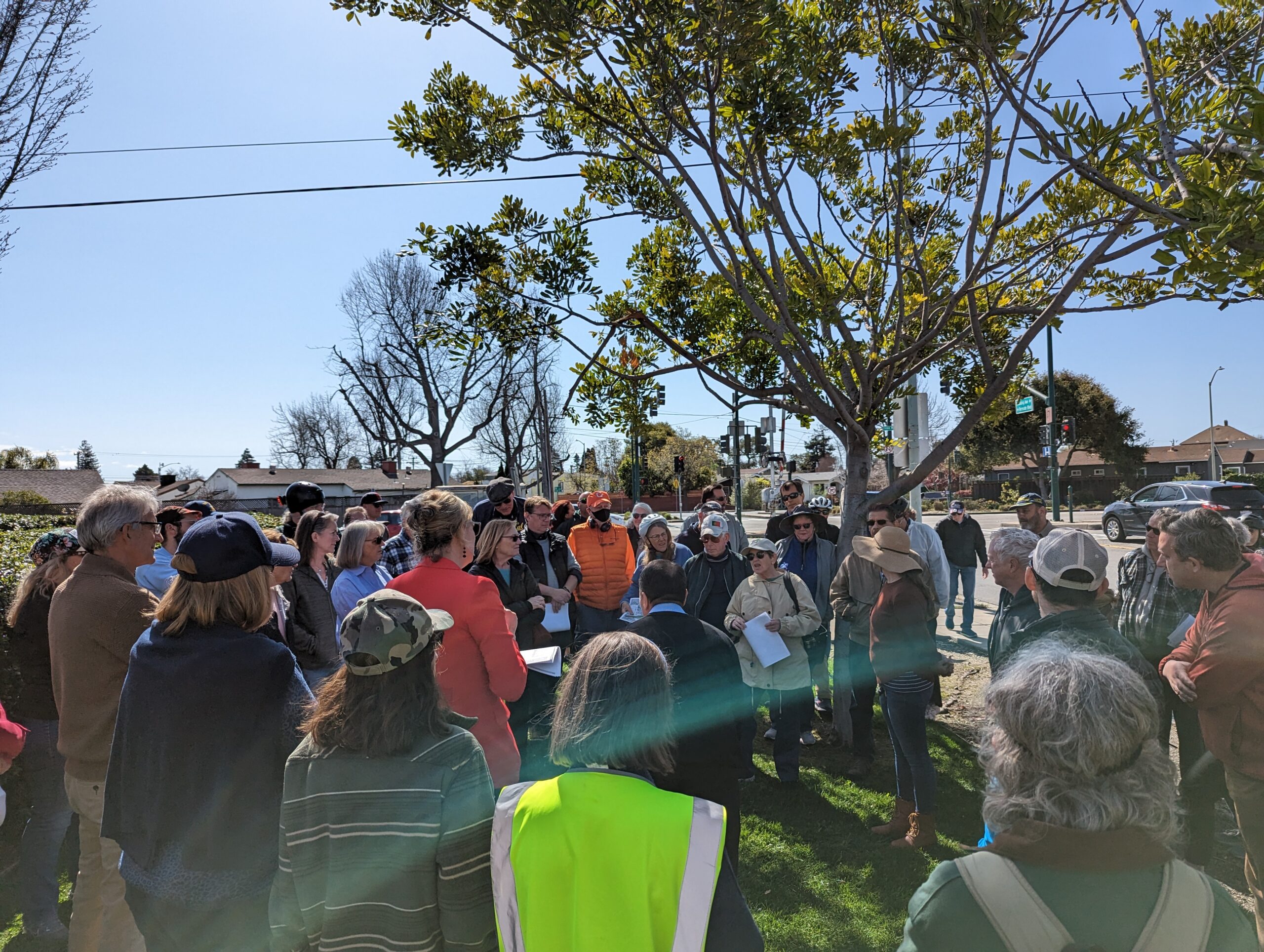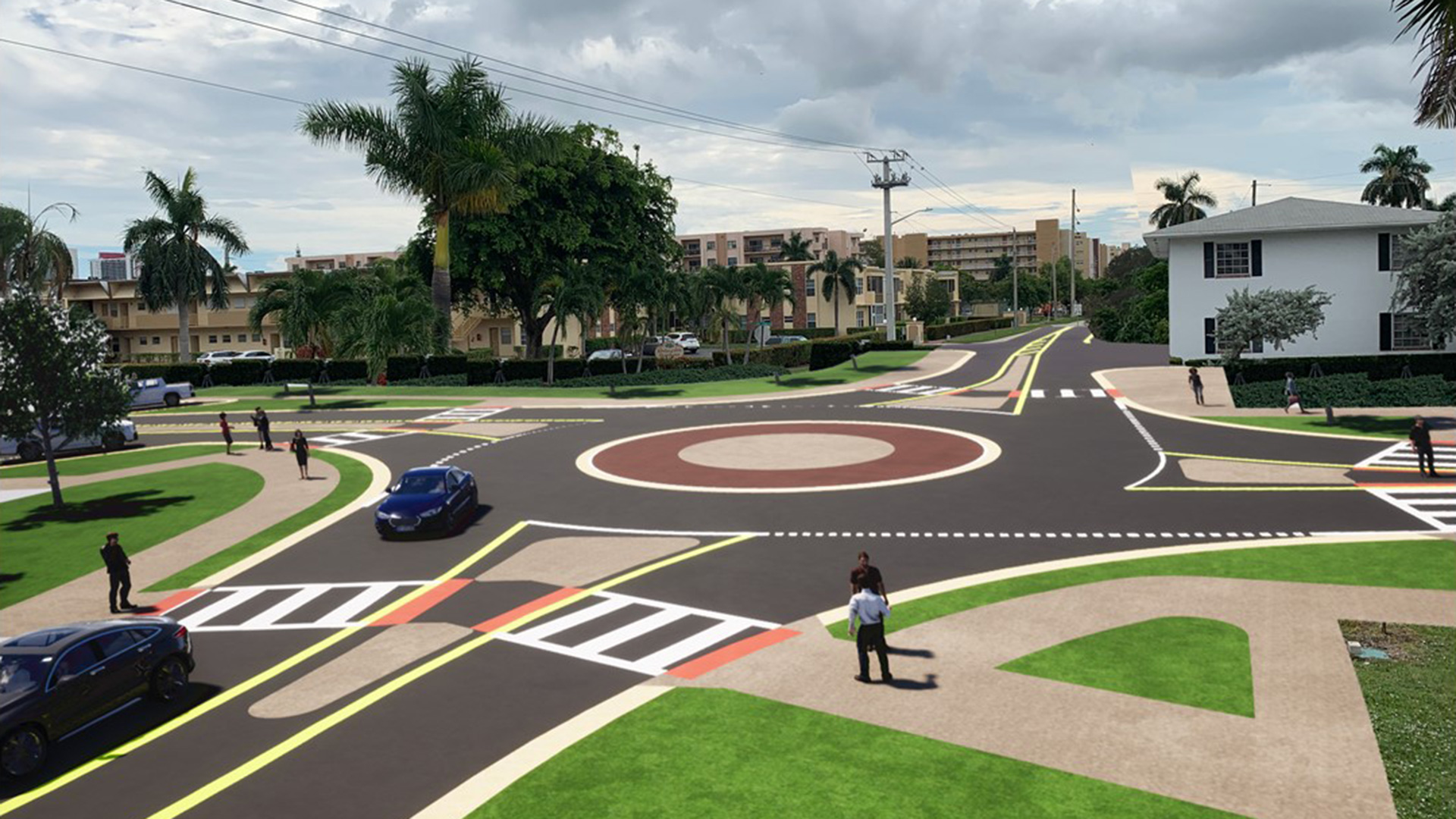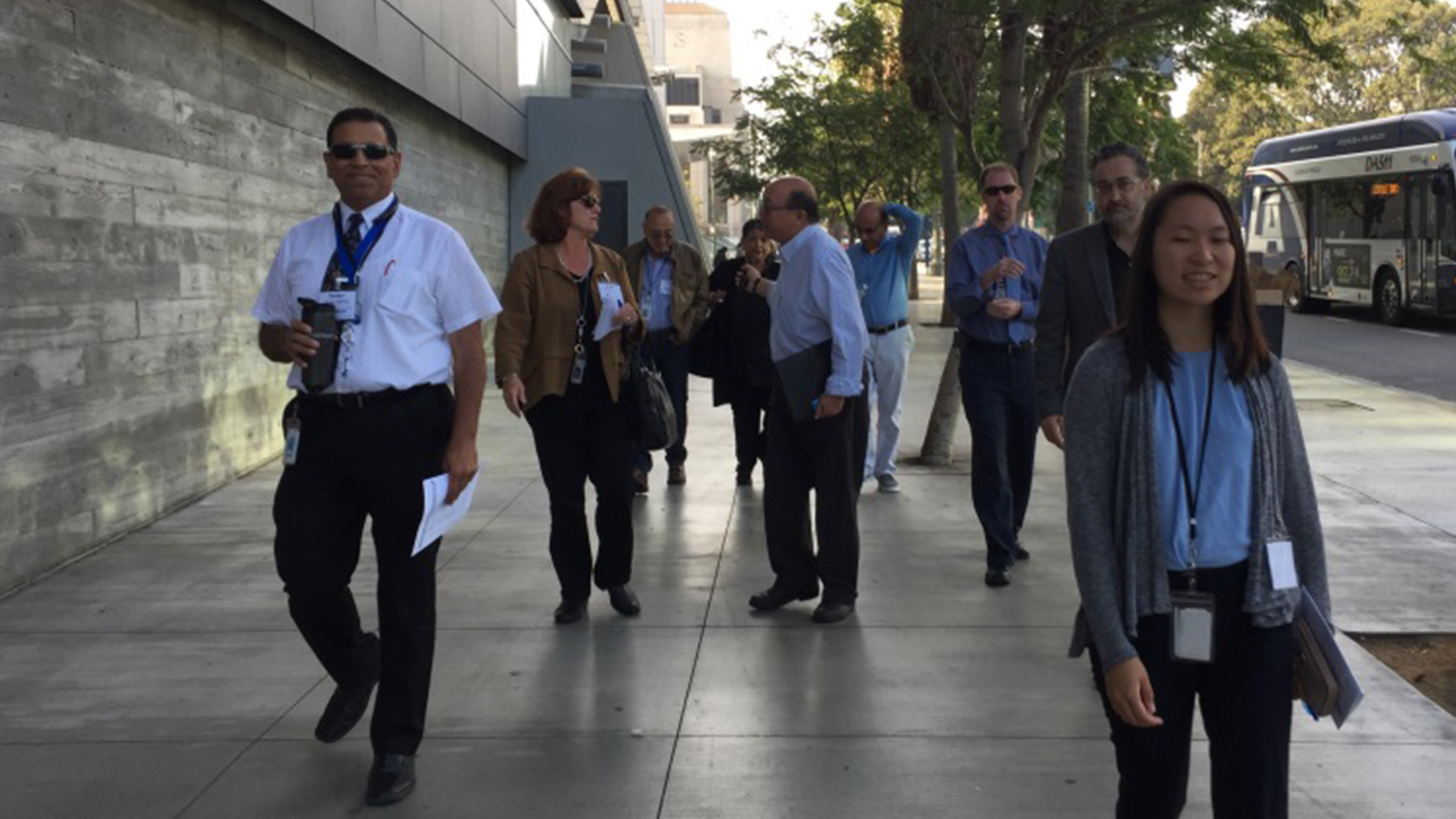Challenge
Tilden Way is an essential connection between Alameda and Oakland—neighboring cities separated by the Oakland Estuary. It is a high-injury corridor in the City with a history of fatal and serious injury crashes. The intersection at Tilden Way and Clement Avenue is difficult to navigate outside a car, with channelized turn lanes on every approach and multilane crossings even with relatively low traffic. Despite its importance as a regional connection—including access to the Fruitvale BART Station and a bridge into Oakland—Tilden Way is missing walking and biking infrastructure. The corridor also supports multiple modes of transportation: an AC Transit bus line, regional truck routes, and access to nearby retail. Safety improvements were needed not just to address the prevalent crash history, but to make this area function better for all road users.
Solution
Our team supported the City of Alameda from early planning continuing now to construction. The work began with a public engagement process and alternatives analysis, which included evaluating signalized intersection and roundabout options. Through a mix of technical evaluation and community input, the project team identified a solution that would accommodate freight movements, preserve transit reliability, create safe walking and biking connections, and even reduce average delay for travelers.
The plan entailed extending Clement Avenue to Tilden Way to form a new one-way truck connection and create a continuous off-street connection from the Miller-Sweeney Bridge to the Cross Alameda Trail. We designed a roundabout for the intersection at Tilden Way, Blanding Avenue, Fernside Boulevard, and Fruitvale Avenue to simplify movements and calm traffic. As part of the broader corridor study, safety needs were also identified at the nearby Broadway and Tilden intersection. Although not part of the original scope, this intersection was added to the project through Safe Routes to BART grant support.
The design features of this project include a road diet to reduce vehicle speeds, raised crosswalks for safer pedestrian crossings, transit stop upgrades, and fully separated bike and multiuse paths. In response to community feedback, the City also integrated a new dog park and public seating area to improve the sense of place. With adaptive, community-focused planning, Alameda is transforming Tilden Way into the safe, connected, and multimodal route the region needs.

This city council meeting was held at the project site to get the community more involved with the project.
The Outcome
Improving Safety, Mobility, and Livability Along a Key Alameda Connection
The redesigned corridor will be safer, more comfortable, and more accessible for people walking, biking, riding transit, and driving. The road will have traffic calming features that slow drivers. Raised crossings and shorter distances will make it easier and safer to cross the street. Separate paths for people biking will reduce conflicts and connect to the broader trail network.
Transit riders will benefit from improved stops, and freight traffic now has a more direct path from Oakland to the City’s truck network. What started as a safety-focused redesign has evolved into a project that balances livability, mobility, and access.



